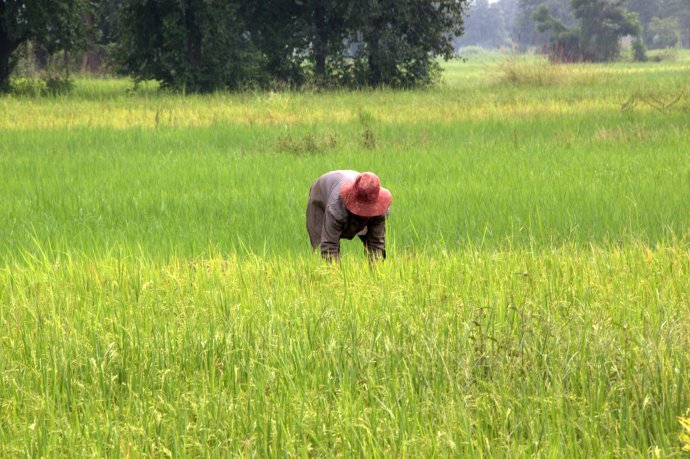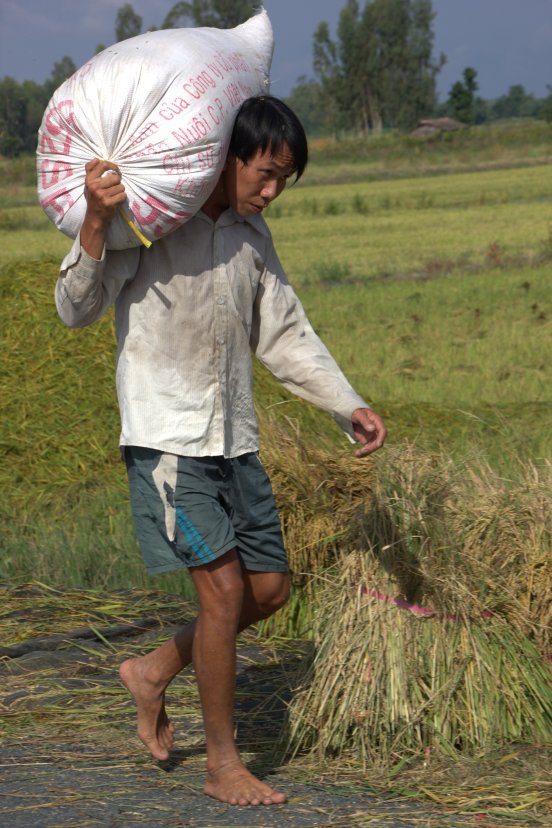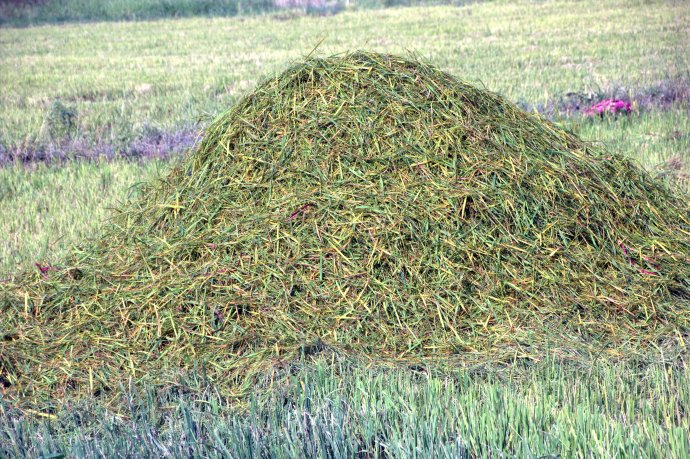If you want to understand Asia, you need to understand rice. But I realized that as many lusciously green rice fields as I’ve seen this year, I know nothing of how it’s grown. So I asked Heifer’s own Mr. Tham for a rice tutorial.
First, a little background: Rice is a cereal grain, the world’s 2nd largest staple crop, 12,000 years old, and responsible for providing 1/5 of the world’s calories. It’s a labor intensive crop (to say the least) and demands high rainfall, as fields are flooded to reduce pests and weeds, while or after young seedings are “set.”
Rice planting starts with letting the seed rest –as Tham put it, “at least 2 weeks of sleep after drying.” Then the seed can be planted either by throwing it directly onto the soil; or soaking it in water for 24 hours, rinsing and placing in a container to germinate in bulk for 48 hours, then casting the tiny young sprouts in the rice field and letting them grow for 20 days before transplanting. I have to say that I didn’t quite understand the transplanting deal, but when a rice plant is fully submerged, apparently you have to dig it up and transplant it to deeper fields. Which is really an insane amount of work.
As the seedling grows up, the very important arching protective leaf becomes mature, and the stalk develops many flowers inside. 30 days later the flowers blossom and male pollen fertilizes the flowers with the help of wind pollination. Every flower becomes a seed, and these rice kernels grow to fill the husk, become mature, turn golden yellow, and then the rice is ripe and ready to harvest.
At this point the rice is cut and bound into 10 kilo bundles, stacked and threshed.
The rice straw is blown out into big piles (we’ll get back to that later) and the empty seed husks collected, while the brown rice kernels are placed in big 50-kilo bags.
This unmilled rice, or paddy, is dried until it only has about 12% humidity (a farmer can tell when it’s ready by cracking it with his teeth), then either taken to a polishing mill where the germ and remaining chaff are removed, or stored for home use (or put down for a little nap and replanted). Polished white rice lasts longer than brown rice, but the brown is more nutritious, as I’ve told my unpersuaded children for years.

White is nice, but brown is better. (You’ll never win this argument in Cambodia or Vietnam.. or my house).
Because people in developing countries are masters of using every single thing for good, the rice by-products are never thrown away. Rice straw is used to raise mushrooms, feed cattle, cook with, make thatched roofs or dusters, mixed with mud for stucco, for handicrafts and paper, as bedding for poultry, and to mulch fields.
Rice husks are used as fuel, in ash as potassium fertilizer, as a medium to raise mung bean shoots, to make artificial wood, or mixed with sand and cement to make roads. And just to complete the righteous recycling circle, when people aren’t using their rice fields to raise a crop, they use them to raise fish and ducks.
So the next time you tuck into a big bowl of rice (Wild Rice Thanksgiving stuffing??), think of all these beautiful people around the world, working so hard to raise it. 
And enjoy!!!












